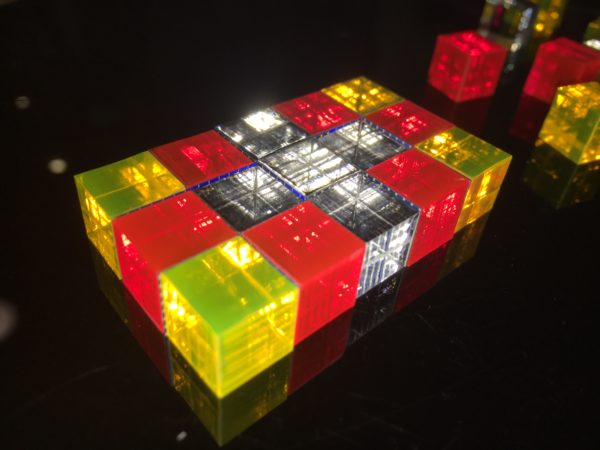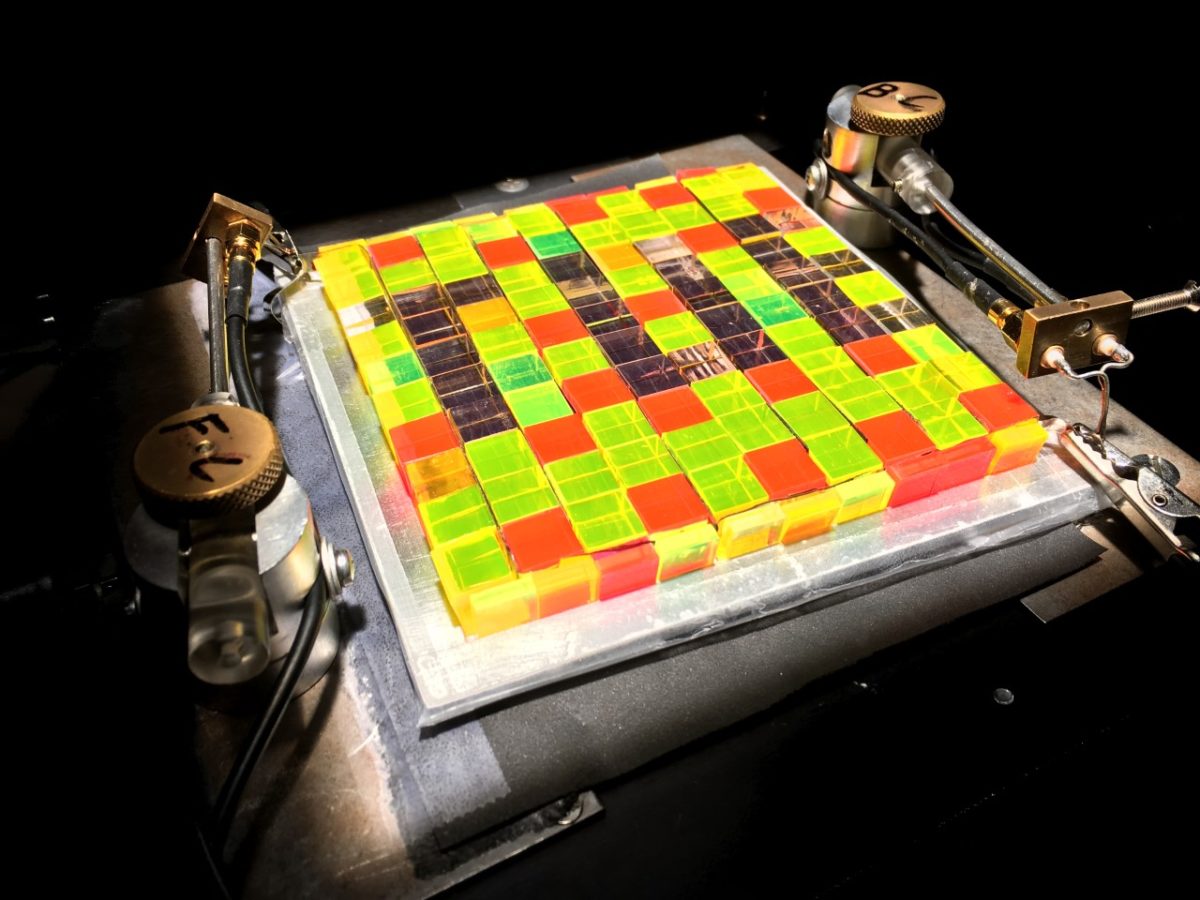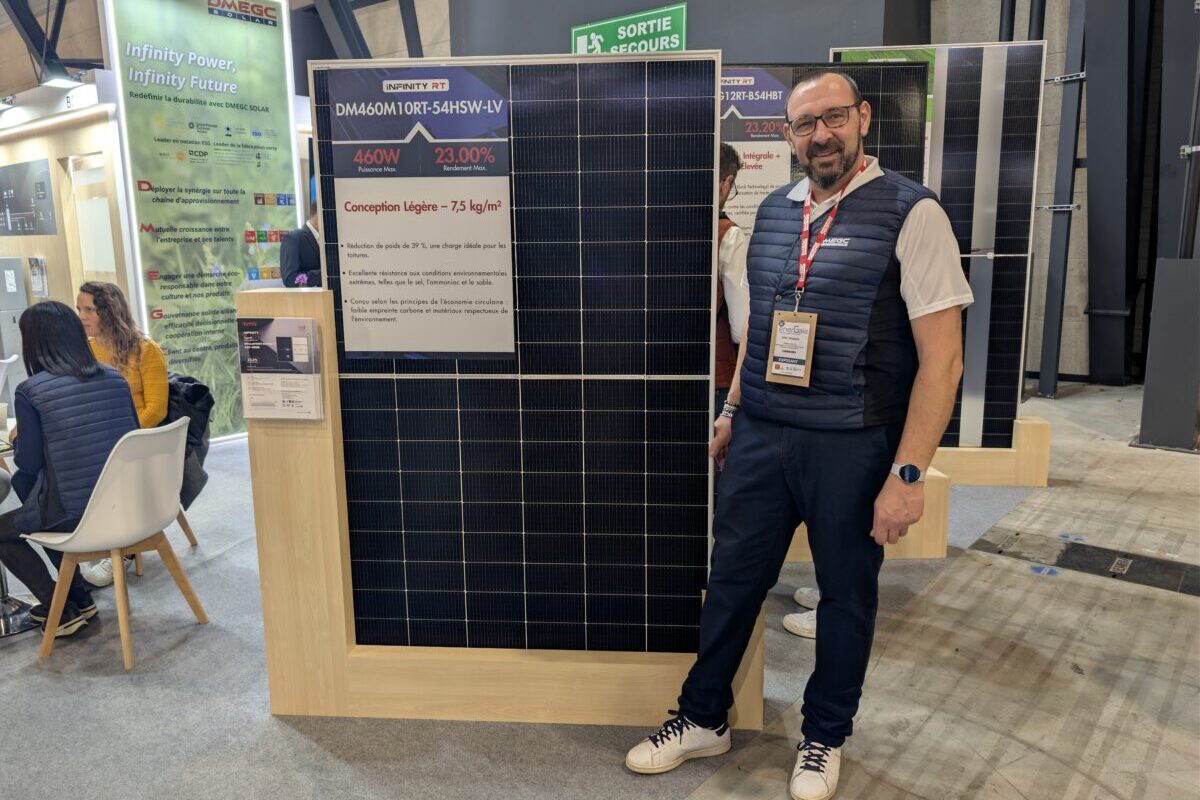A Dutch-Australian research team has developed a 1 cm3 luminescent solar concentrator (LSC) device, equipped with 20%-efficient bifacial silicon PV cells, which can be used and assembled in several mosaic configurations.
“These mosaic LSC PV devices could be applied to make solar energy ubiquitous in the urban setting where it requires making visually appealing devices that can function in the challenging lighting conditions found in cities,” researcher Mohammadreza Aghaei told pv magazine. “Thus, by developing such colorful, visually appealing mosaic LSC PV devices, one can accelerate the general acceptance of solar energy in the built environment, even with modest efficiency devices. The proposed LSC PV devices support colorful surfaces, transparency and provide for freedom, offering many design opportunities to enhance the overall functionality and experience of PV power generation within consumer products, the built environment and transportation.”
The LSCs are commonly used as photonic devices in the production of fine chemicals in photomicroreactors, in dynamic “smart” windows to control light entering spaces, and for distribution of color-tuned light to enhance plant growth in greenhouses. They can also be used to improve the efficiency of solar panels. The LSCs consist of luminescent materials that are also known as luminophores, which are groups of molecules that emit light when illuminated.
The materials, which can be coated on the surface of a polymer or glass plate, or used as a dopant of the polymer or glass plate acting as a light guide, can capture direct and indirect sunlight at one wavelength and re-emit it at a longer wavelength. If applied to PV, luminophores are able to capture high-energy photons that the photovoltaic panels cannot absorb and re-emit them as photons.

The scientists inserted the bifacial solar cells between individual LSC elements and created a pattern of cubical mosaic LSC elements. They said this design increases the available top surface area of solar cells per unit of aperture area and, as a result, the power conversion efficiency of the whole LSC PV device can be increased.
For the LSC devices, they used conventional materials such as poly(methyl methacrylate) (PMMA) doped with commercial organic dyes and a Coumarin (Cou) compound. The researchers attached bifacial cells to the edges of the lightguides using an index-matching optical adhesive and monofacial c-Si PV cells to the backs of the lightguide cubes. They encapsulated the cells using polyolefin (PO) materials.
Under standard illumination conditions, the group found that the luminophores were able to absorb nearly all the high-energy photons and emitted photons with longer wavelengths more matched with the spectral response of the silicon solar cells. They also tested seveal mini-mosaics to determine the performance of arrays of LSCs.
“The greatest power conversion efficiency of 11.6% was obtained for the LSC PV device consisting of four cubical lightguides containing Cou with four edge- and four bottom-mounted bifacial and monofacial silicon solar cells, respectively,” they said. “The main source of the low fill factor values is related to the poor contacts between the tabs and the fingers of the PV cells, resulting in high series resistance.”
Aghaei said commercial production of the proposed devices could begin after their efficiency is further improved.
“In this phase, it is difficult to estimate production costs with great accuracy, however, a first guess would be that for these customizable LSC PV devices the production costs after commercialization will be $0.5 per watt or less,” he said.
The scientists presented the new technology in “Measured power conversion efficiencies of bifacial luminescent solar concentrator photovoltaic devices of the mosaic series,” which was recently published in Progress in Photovoltaics. The research group includes academics from the University of Melbourne and the University of New South Wales in Australia, as well as the Eindhoven University of Technology in the Netherlands.
“In future studies, the coupling between the solar cells and the cubical lightguides could be further enhanced to improve electrical parameters as well the efficiency of the overall devices, and experimentation of thinner and/or larger mosaic elements and the effect of indirect light could both be explored,” they concluded.
This content is protected by copyright and may not be reused. If you want to cooperate with us and would like to reuse some of our content, please contact: editors@pv-magazine.com.




Impressive! Thanks for sharing this.